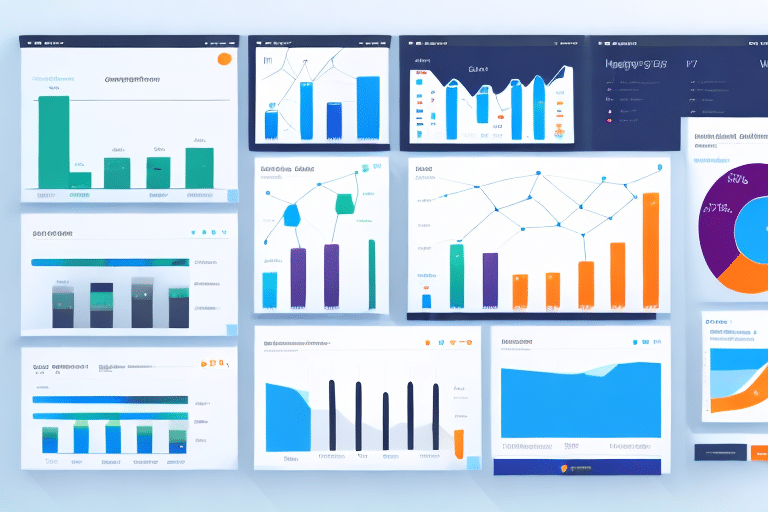Introduction to E-Commerce Metrics: Conversion Rate vs Bounce Rate
In the competitive landscape of e-commerce, understanding and optimizing key performance metrics is essential for business growth. Among these, conversion rate and bounce rate stand out as critical indicators of a website's effectiveness. This comprehensive guide delves into these metrics, their significance, and strategies to enhance them, backed by data and insights from reputable sources.
Understanding Key E-Commerce Metrics
What is Conversion Rate?
The conversion rate measures the percentage of website visitors who complete a desired action, such as making a purchase, signing up for a newsletter, or filling out a contact form. It is calculated by dividing the number of conversions by the total number of visitors and multiplying by 100.
For instance, if your website attracts 10,000 visitors in a month and 500 of them make a purchase, your conversion rate is 5% (500 ÷ 10,000 x 100 = 5%).
According to Statista, the average e-commerce conversion rate globally is approximately 2.86%, highlighting the importance of striving for higher rates to remain competitive.
What is Bounce Rate?
The bounce rate represents the percentage of visitors who navigate away from the site after viewing only one page. A high bounce rate may indicate that visitors are not finding what they're looking for or that the site experience is lacking.
For example, if your site receives 20,000 visitors in a month and 5,000 of them leave after viewing just one page, your bounce rate is 25% (5,000 ÷ 20,000 x 100 = 25%).
Industry standards suggest that a bounce rate between 26% and 40% is excellent, 41% to 55% is average, and anything above 70% may need improvement (WordStream).
The Relationship Between Conversion Rate and Bounce Rate
Conversion rate and bounce rate are intrinsically linked. A high bounce rate often correlates with a lower conversion rate, as visitors leaving quickly reduce the pool of potential converters. Conversely, a low conversion rate may contribute to a higher bounce rate if visitors are unable to find relevant content or complete desired actions.
Monitoring these metrics together provides a holistic view of website performance, enabling businesses to identify and address areas that may be hindering growth.
Strategies to Improve Conversion Rate and Reduce Bounce Rate
Optimizing Conversion Rate
- Enhance Product Pages: Clearly display product features, benefits, and high-quality images. Incorporate customer reviews and bullet points to highlight key information. (Shopify)
- Simplify the Checkout Process: Reduce the number of steps and eliminate unnecessary form fields to make purchasing seamless.
- Improve Site Speed: A fast-loading website enhances user experience and reduces cart abandonment. Utilize tools like Google PageSpeed Insights to assess and optimize site speed.
- Utilize Clear Call-to-Actions (CTAs): Make CTAs prominent and compelling to guide visitors toward desired actions.
Reducing Bounce Rate
- Personalize Content: Tailor content to match visitor interests and demographics to increase engagement.
- Optimize Page Load Speed: As with conversion rate, a fast-loading site keeps visitors engaged. Aim for a load time under 3 seconds (WebFX).
- Ensure Content Relevance: Align website content with the keywords and topics that attract your target audience.
- Enhance Site Navigation: Design an intuitive and user-friendly navigation structure to help visitors find what they’re looking for quickly.
The Impact of User Experience on Metrics
User Experience (UX) plays a pivotal role in both conversion rate and bounce rate. A well-designed UX ensures that visitors can navigate the site effortlessly, find relevant information, and complete desired actions without frustration.
Research by Nielsen Norman Group highlights that improved UX can lead to higher user satisfaction, increased conversions, and reduced bounce rates.
Investing in UX design, including responsive design, clear layout, and accessible features, can significantly impact these key metrics.
Analyzing Metrics: Best Practices and Tools
Best Practices for Analyzing E-Commerce Metrics
- Regular Monitoring: Consistently track metrics to identify trends and patterns over time.
- Contextual Analysis: Consider external factors such as seasonality, marketing campaigns, and market trends when interpreting data.
- Set Clear Goals: Define what success looks like for your business to focus on relevant metrics.
Essential Tools for Tracking Metrics
- Google Analytics: A comprehensive tool for tracking website traffic, user behavior, and conversion metrics.
- Kissmetrics: Focuses on customer engagement and retention metrics.
- Crazy Egg: Provides heatmaps and visual reports on user interactions.
- Contentsquare: Offers advanced analytics and session replay features.
Common Mistakes to Avoid When Analyzing Metrics
- Ignoring Context: Failing to account for external factors can lead to misinterpretation of data.
- Focusing on Vanity Metrics: Metrics like social media likes may not directly correlate with business goals.
- Overreacting to Fluctuations: Short-term variances should be analyzed over longer periods to determine true trends.
- Neglecting Segmentation: Analyzing metrics without segmenting data by user groups can obscure important insights.
Leveraging Metrics to Inform Marketing Strategy
Conversion rate and bounce rate metrics provide valuable insights that can shape your marketing strategies. By understanding which areas need improvement, businesses can allocate resources more effectively and tailor their marketing efforts to meet customer needs.
- Targeted Advertising Campaigns: Use conversion data to focus on high-performing channels and demographics.
- Refined Promotional Strategies: Identify top-selling products and optimize promotional efforts around them.
- Incorporate A/B Testing: Test different versions of ads, landing pages, and CTAs to determine what resonates best with your audience.
The Role of A/B Testing in Optimization
A/B testing is a fundamental method for optimizing both conversion rates and bounce rates. By comparing two variations of a webpage or element, businesses can determine which version performs better with their audience.
- Test One Element at a Time: To ensure reliable results, focus on changing a single variable, such as a headline or button color.
- Ensure Sufficient Traffic: Collect enough data to make statistically significant conclusions.
- Analyze and Implement Findings: Use the results to make informed decisions that enhance user experience and drive conversions.
Tools like Optimizely and VWO facilitate A/B testing by providing easy-to-use platforms for setting up and analyzing experiments.
Future Trends in E-Commerce Metrics
The landscape of e-commerce metrics is continually evolving, driven by technological advancements and changing consumer behaviors. Keeping abreast of these trends is crucial for maintaining a competitive edge.
- Mobile Optimization: With mobile commerce on the rise, optimizing websites for mobile users is paramount. Responsive design and mobile-friendly interfaces enhance user engagement and conversion rates.
- Video Marketing: Video content is becoming a powerful tool for engaging customers. Incorporating videos can increase time spent on site and improve conversion rates (Forbes).
- Artificial Intelligence (AI): AI-driven analytics can provide deeper insights into customer behavior and automate personalized experiences, further optimizing conversion rates and reducing bounce rates.
Embracing these trends will enable businesses to adapt to the evolving digital landscape and continue delivering exceptional user experiences.
Conclusion
Conversion rate and bounce rate are indispensable metrics for any e-commerce business aiming to thrive in a competitive market. By understanding these metrics, implementing strategies to optimize them, and leveraging advanced tools and trends, businesses can significantly enhance their online performance. Continuous analysis and adaptation are key to driving growth, increasing profits, and ensuring customer satisfaction.






















